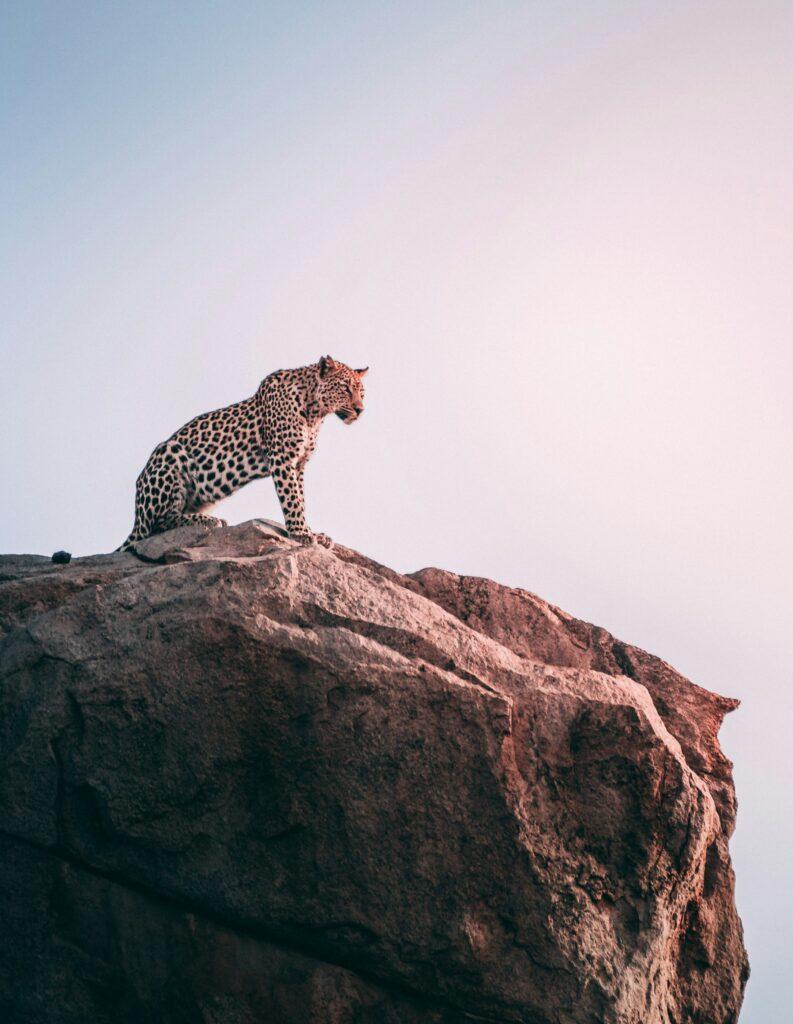🌿🐢 The Diverse Wildlife of Galápagos Islands, Ecuador 🦎🌊
Explore the Unique Flora and Fauna in the Enchanting Galápagos Archipelago

Introduction
The Galápagos Islands, nestled in the Pacific Ocean, are a haven of biodiversity that has captivated the world for centuries. This archipelago, renowned for its significant role in shaping Charles Darwin’s theory of evolution, is home to an array of unique and diverse wildlife. In this blog post, we will embark on a journey to explore the extraordinary creatures that inhabit these isolated islands, shedding light on their adaptations, conservation challenges, and the ongoing efforts to preserve this natural wonder.
Overview of Galápagos Wildlife
The Galápagos Islands, situated in the Pacific Ocean about 1,000 kilometers off the coast of Ecuador, boast a unique and isolated location that has profoundly influenced the evolution of its wildlife. This archipelago of volcanic islands has remained relatively untouched by external influences, fostering an environment where species have evolved independently over millions of years.
Explanation of the archipelago’s isolated location and its impact on evolution
The isolation of the Galápagos Islands plays a pivotal role in the development of its distinct wildlife. The archipelago’s remote location has limited the introduction of new species, leading to a remarkable level of endemism. Over time, the isolated populations underwent divergent evolution, resulting in the emergence of species found nowhere else on Earth. The lack of natural predators also contributed to unique adaptations as species evolved to fit specific niches in the ecosystem.
Diversity of species and their adaptations to the unique environment
The Galápagos Islands showcase a remarkable diversity of flora and fauna, with many species displaying fascinating adaptations to their surroundings. From the iconic Galápagos giant tortoises with their long necks adapted for reaching vegetation to the marine iguanas that forage underwater, each species has evolved distinct characteristics to thrive in the islands’ challenging conditions. The variability in environmental factors, such as altitude, temperature, and precipitation, has led to the development of specialized traits among the islands’ inhabitants.
Connection to Charles Darwin’s theory of evolution and natural selection
Charles Darwin’s visit to the Galápagos Islands in 1835 played a pivotal role in the formulation of his theory of evolution by natural selection. The observations of unique species and their adaptations to specific environments inspired Darwin to develop the groundbreaking concept that individuals with advantageous traits are more likely to survive and reproduce, passing on those traits to future generations. The Galápagos Islands serve as a living laboratory, providing tangible evidence of the evolutionary processes Darwin proposed, making them an iconic symbol in the history of evolutionary biology.
Land Wildlife
The Galápagos Islands are renowned for their unique and diverse land wildlife, featuring iconic species that have captured the fascination of scientists and nature enthusiasts alike. Among these, the Giant Tortoises stand out not only for their impressive size but also for their significance in the archipelago’s ecosystem and ongoing conservation efforts.
Iconic species: Giant Tortoises – their significance and conservation efforts
Giant Tortoises, synonymous with the Galápagos, play a crucial role in shaping the islands’ ecosystems. As herbivores, they are natural landscapers, influencing vegetation distribution by shaping the plant community through their feeding habits. Furthermore, their slow movements and large size make them an integral part of the islands’ unique biodiversity.
Despite their significance, Giant Tortoises faced severe threats, including habitat destruction and introduced species. Conservation efforts have been underway to protect and restore tortoise populations. Breeding programs, habitat restoration initiatives, and strict conservation regulations have contributed to the recovery of these iconic species. Visitors to the Galápagos can witness these efforts firsthand and learn about the challenges and successes in conserving these magnificent creatures.
Unique bird species: Blue-footed Boobies, Galápagos Finches, and more
The Galápagos Islands are a haven for bird enthusiasts, offering a spectacle of unique avian species. Blue-footed Boobies, with their distinctive bright blue feet, are a symbol of the archipelago. Galápagos Finches, famously studied by Charles Darwin, showcase remarkable beak variations adapted to different diets. These birds, along with a myriad of other species like the Waved Albatross and the Galápagos Hawk, contribute to the islands’ rich avifauna.
Visitors can witness elaborate courtship displays, intricate nesting behaviors, and the coexistence of various bird species, providing a glimpse into the evolutionary processes that have shaped these remarkable creatures.
Reptiles: Marine Iguanas and Land Iguanas – their adaptation to the harsh conditions
The Galápagos Islands are home to unique reptiles, each adapted to the challenging conditions of their respective environments. Marine Iguanas, the only marine lizards in the world, have evolved to forage in the harsh intertidal zone. Their dark coloration helps absorb and retain heat, allowing them to dive into cold waters to feed on algae.
Land Iguanas, on the other hand, are found in the drier regions of the islands and have adapted to a herbivorous diet. Their iconic yellow and orange hues provide a striking contrast to the volcanic landscapes. These reptiles showcase the incredible ability of species to adapt and thrive in the diverse habitats of the Galápagos Islands.
Marine Wildlife
The marine environment surrounding the Galápagos Islands is teeming with life, featuring a diverse array of species that have adapted to the unique conditions of the Pacific Ocean. From playful Sea Lions to elusive Galápagos Penguins and Fur Seals, the marine wildlife of the Galápagos adds another layer of intrigue to this extraordinary archipelago.
Diverse marine life: Galápagos Penguins, Sea Lions, and Fur Seals
Galápagos Penguins, the only penguin species found north of the equator, are a fascinating example of adaptation to warm climates. These charismatic birds navigate the waters with remarkable agility, making them a delight for snorkelers and divers. Sea Lions, with their playful antics, are a common sight along the shores, inviting visitors to witness their social behaviors and underwater acrobatics. Fur Seals, while less numerous, contribute to the diversity of marine mammals in the Galápagos, showcasing the archipelago’s commitment to conservation and protection of its unique species.
Importance of marine conservation in the Galápagos
Marine conservation plays a crucial role in preserving the delicate balance of the Galápagos ecosystem. The islands are a UNESCO World Heritage site, and strict regulations are in place to protect the marine life. Fishing restrictions, sustainable tourism practices, and ongoing research efforts contribute to the conservation of species like Galápagos Penguins, Sea Lions, and Fur Seals. Visitors are encouraged to engage in responsible tourism, respecting guidelines to minimize their impact on the fragile marine environment.
Unique underwater ecosystems and species: Hammerhead Sharks, Manta Rays, and more
The underwater world of the Galápagos is a realm of wonders, featuring unique ecosystems and species that attract divers and marine enthusiasts from around the globe. Hammerhead Sharks, known for their distinctive head shape, patrol the ocean depths, creating a thrilling spectacle for those lucky enough to witness them. Manta Rays gracefully glide through the waters, showcasing the rich biodiversity of the Galápagos marine environment. Other species, including Galápagos Green Turtles, marine iguanas, and a variety of colorful fish, contribute to the mosaic of life beneath the waves. Exploring these underwater realms underscores the importance of preserving the marine habitats that make the Galápagos Islands a natural marvel.

The Conservation Challenges
The pristine beauty of the Galápagos Islands is under constant threat from various human-induced factors, posing significant challenges to the delicate balance of the ecosystem that has evolved over millennia.
Human impact on the delicate ecosystem
Human activities, including habitat destruction, introduction of invasive species, and overfishing, have had profound effects on the Galápagos ecosystem. The introduction of non-native species, such as rats and goats, has disrupted the natural habitats of many endemic species, leading to population declines and even extinctions. Overfishing in the surrounding waters has put pressure on marine species, affecting the balance of the marine food chain. Additionally, the expansion of human settlements and tourism infrastructure has further encroached upon the islands’ fragile ecosystems. The cumulative impact of these human activities underscores the need for urgent conservation measures to protect the unique biodiversity of the Galápagos.
Conservation initiatives and their impact
Recognizing the threats posed by human activities, various conservation initiatives have been implemented to safeguard the Galápagos Islands. Conservation organizations, governmental bodies, and local communities are actively involved in habitat restoration projects, eradication of invasive species, and the enforcement of strict regulations to mitigate the impact of human activities. These initiatives aim to restore the natural balance of the ecosystem, protect endangered species, and preserve the islands’ unique biodiversity. Scientific research and monitoring programs also play a crucial role in understanding the ongoing conservation challenges and adapting strategies to address emerging threats.
The role of tourism in conservation efforts
Tourism, a double-edged sword in conservation efforts, brings both opportunities and challenges to the Galápagos Islands. While responsible and sustainable tourism can contribute to the funding of conservation initiatives and raise awareness about the importance of preserving the natural environment, uncontrolled tourism can exacerbate the existing threats. Striking a delicate balance is crucial to ensure that tourism benefits local communities, generates funds for conservation, and minimizes its ecological footprint. Through carefully managed and eco-friendly tourism practices, the Galápagos Islands can continue to thrive as a unique and biodiverse destination while safeguarding its delicate ecosystems for future generations.
FAQs
Q. What is the significance of the Galápagos Islands in terms of wildlife?
A. The Galápagos Islands are renowned for their unique and diverse wildlife, largely due to their isolation and the variety of ecosystems present. Many species found here are endemic, meaning they are not found anywhere else in the world.
Q. How did the Galápagos Islands contribute to Charles Darwin’s theory of evolution?
A. Charles Darwin’s visit to the Galápagos Islands in 1835 played a crucial role in the development of his theory of evolution by natural selection. The distinct variations among species on different islands helped him formulate his groundbreaking ideas on adaptation and speciation.
Q. What are some iconic species found in the Galápagos Islands?
A. The islands are home to unique species such as the Galápagos giant tortoise, marine iguana, blue-footed booby, and Galápagos penguin. These creatures have adapted to their specific island environments, showcasing remarkable evolutionary traits.
Q. How can visitors experience the wildlife of the Galápagos Islands?
A. Visitors can explore the wildlife through guided tours, snorkeling, and hiking excursions. Strict conservation measures are in place to minimize human impact, and visitors are encouraged to follow guidelines to ensure the preservation of this delicate ecosystem.
Q. Are there any conservation efforts in place to protect the Galápagos wildlife?
A. Yes, the Galápagos Islands are a UNESCO World Heritage site, and there are strict conservation regulations in place. These include visitor quotas, research permits, and ongoing monitoring to safeguard the unique flora and fauna of the islands.
Q. When is the best time to visit the Galápagos Islands for wildlife observation?
A. The peak wildlife observation season is during the dry, cool season from June to December when various species engage in breeding activities. However, the islands offer unique experiences throughout the year, and the choice depends on individual preferences.
Conclusion
As we conclude our exploration of the Galápagos Islands and their diverse wildlife, it becomes evident that this archipelago is not just a destination; it is a living testament to the marvels of evolution and the importance of conservation. The delicate balance of ecosystems, the unique adaptations of species, and the ongoing efforts to protect this natural treasure underline the need for responsible tourism and global conservation support. Let us commit to appreciating and preserving the Galápagos Islands, ensuring that the legacy of its remarkable wildlife persists for generations to come.
UP NEXT
https://touristeyes.com/a-cultural-experience-in-yangon-myanmar/





Facebook Comments